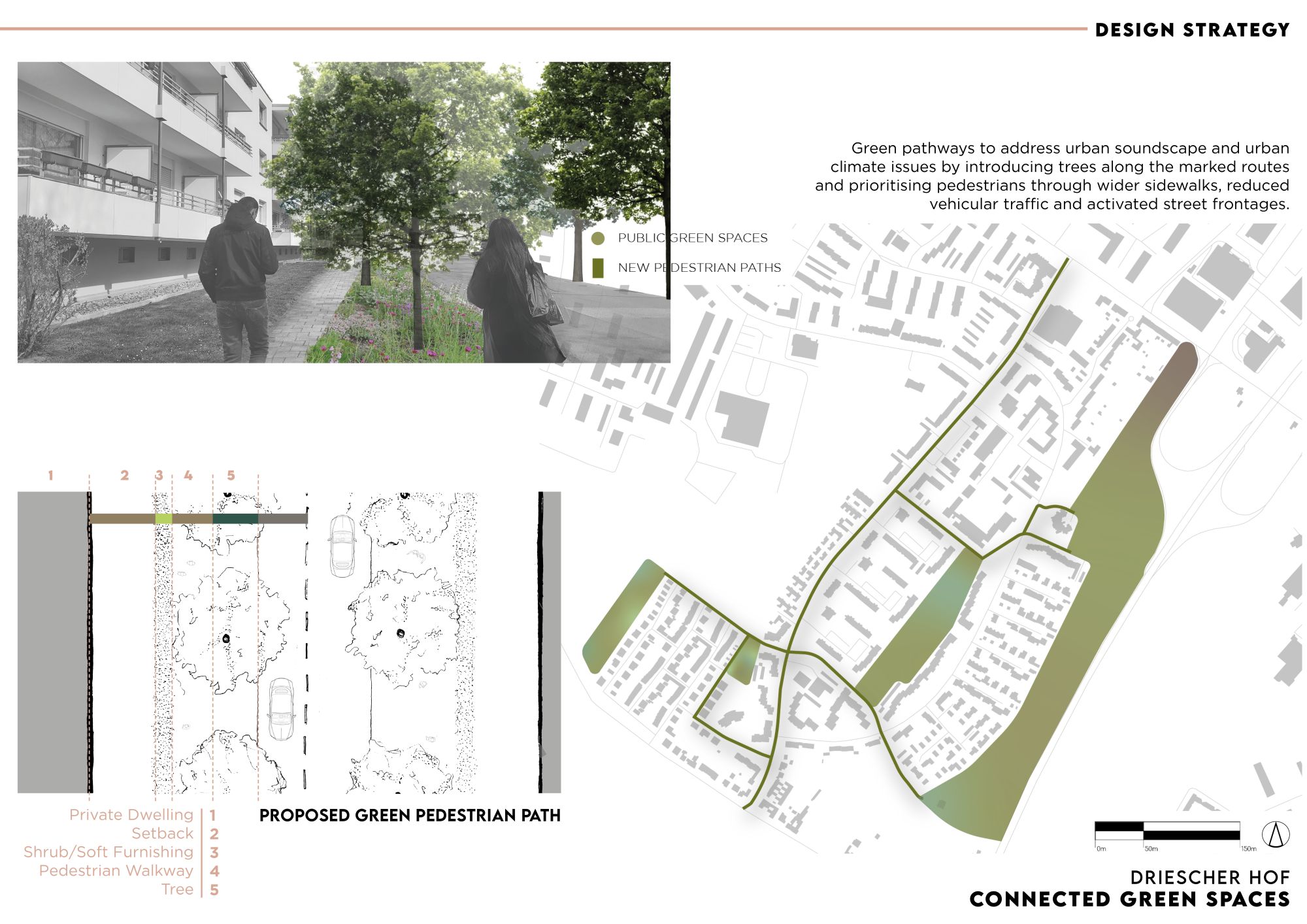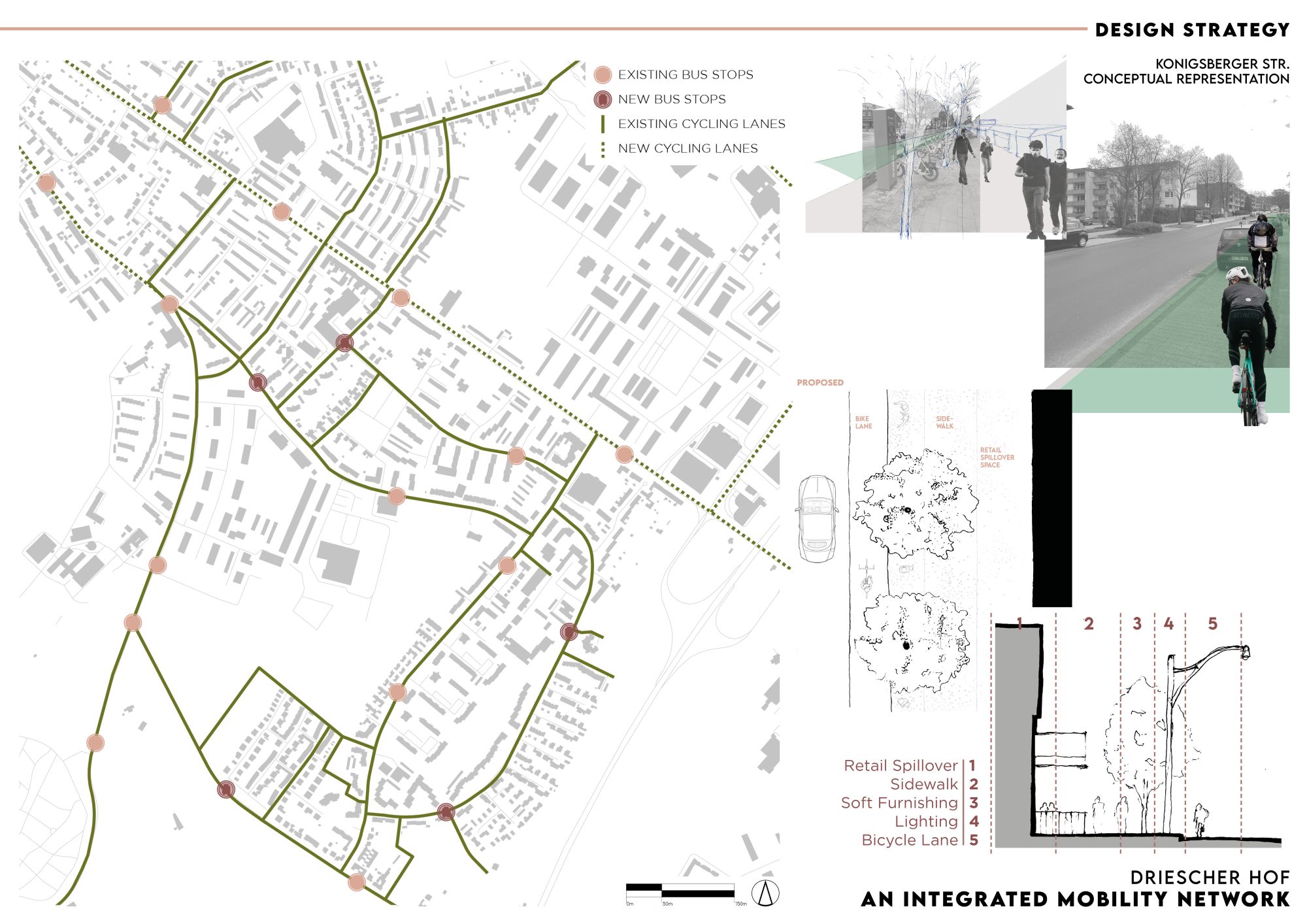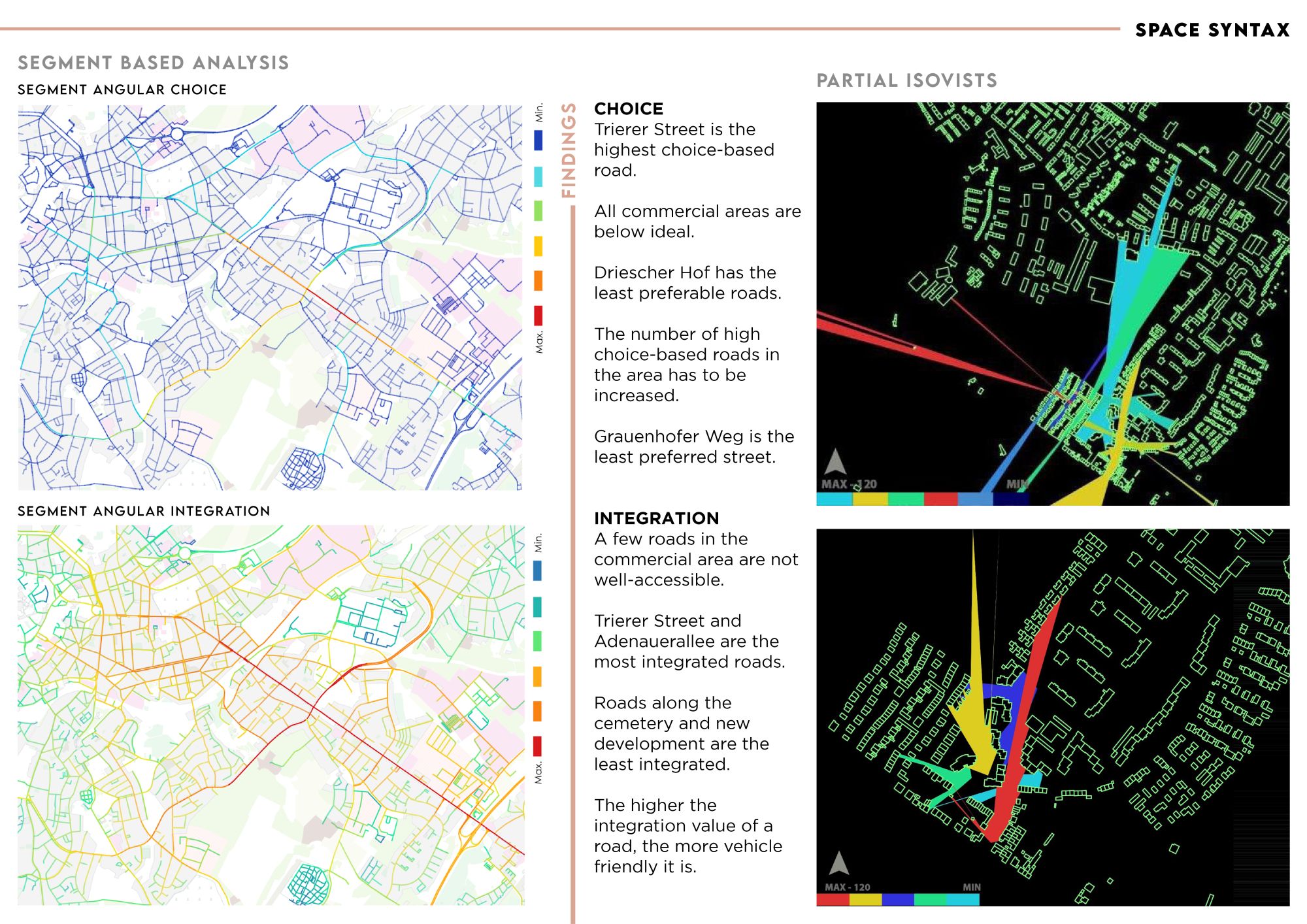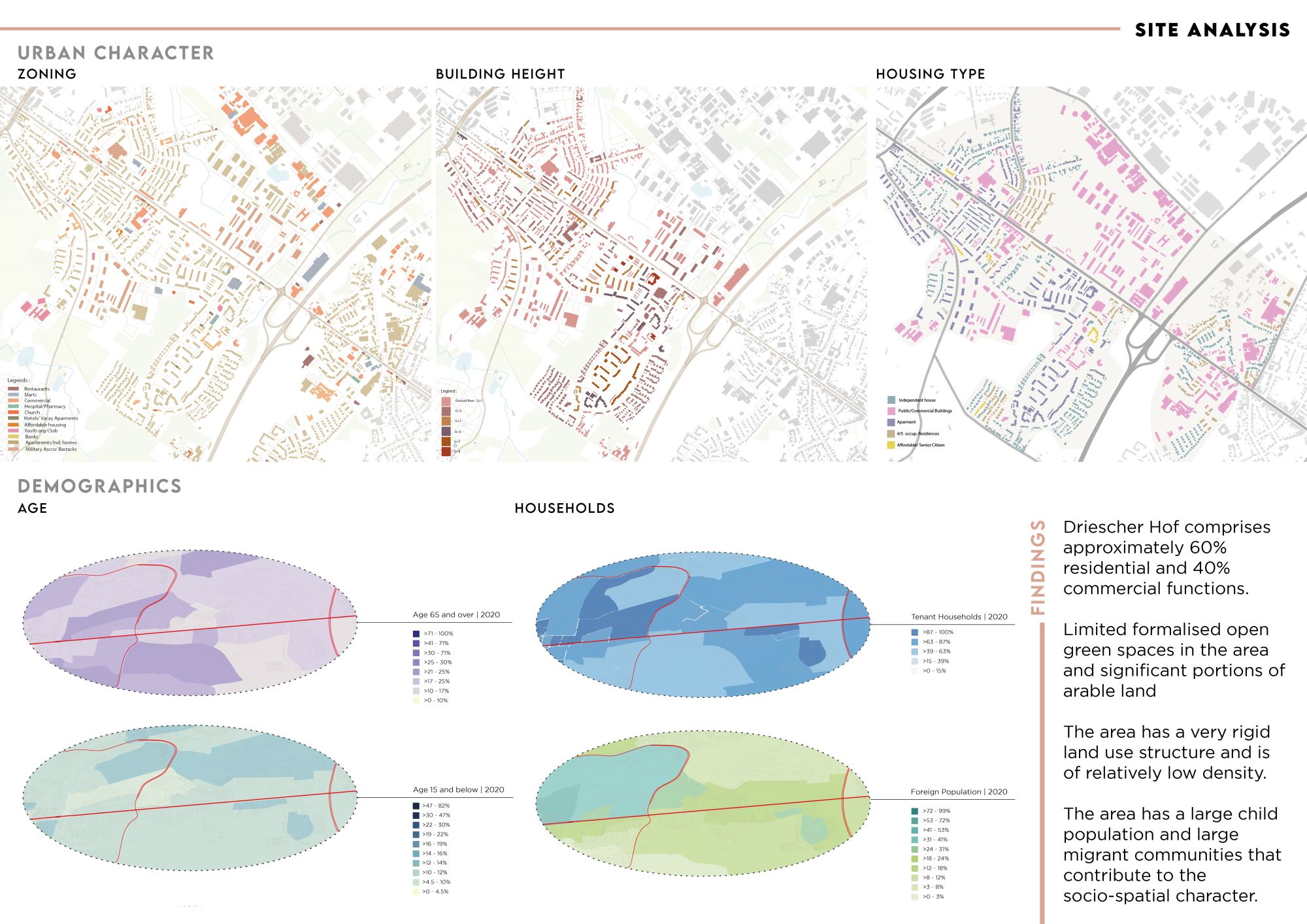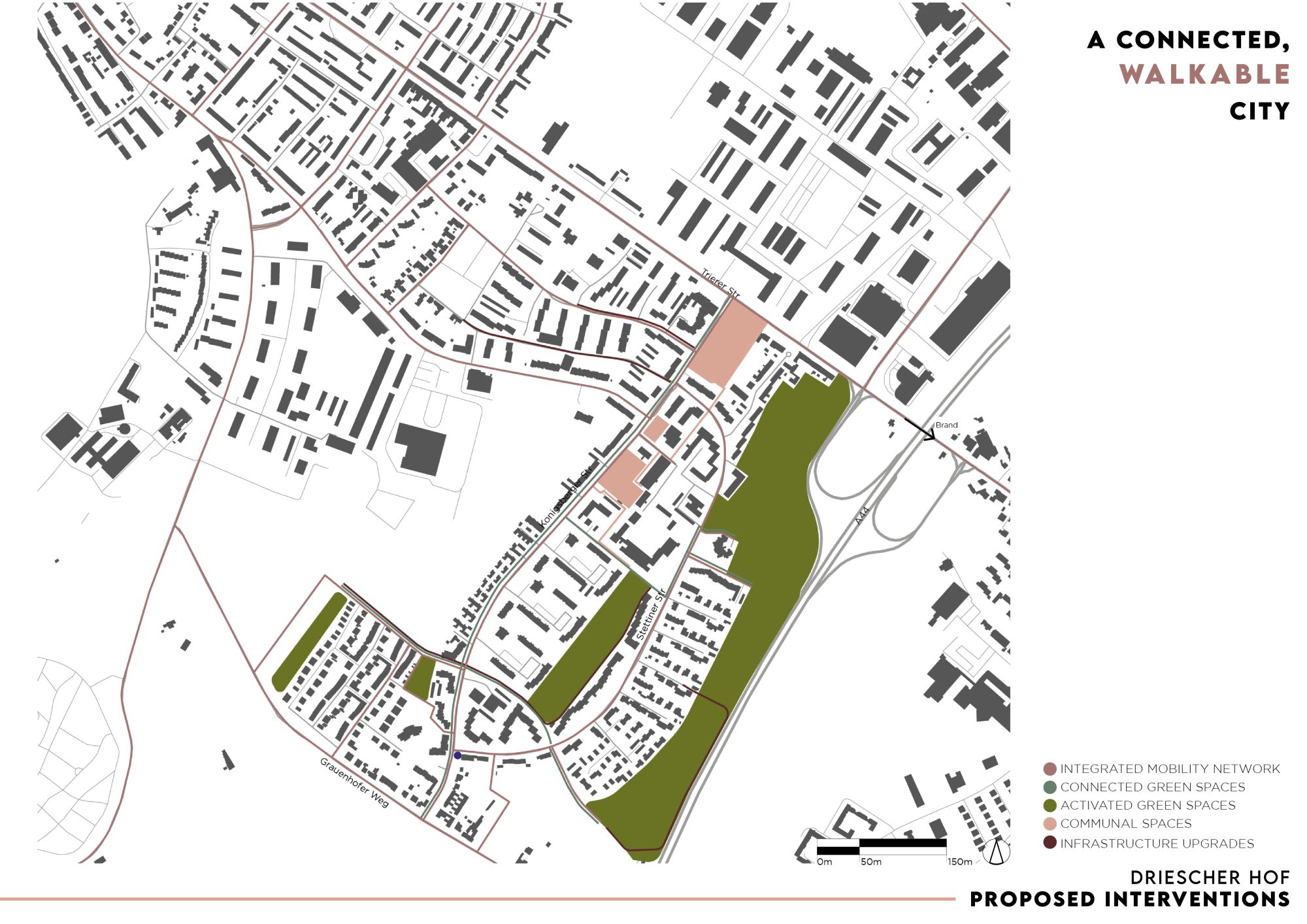A Connected and Walkable City: A Post-Covid Recovery Strategy in Aachen, Germany
A project by Ciske Smit, Mrunalini O’Bhadbhade, Syed Zeeshan Husain, Srikar Nouduri, Riya Mandal
Integrated Project II
Lecturer: Dr. ir. Ceren Sezer
summer semester 2021
As cities look to recover from the Covid-19 pandemic, urban connectivity and walkability are two important factors to consider, especially in vulnerable neighbourhoods where access to public space, amenities and services is limited. Connectivity serves to shape the urban form to create liveable and sustainable cities. Walkability ensures that cities are people-centred and reduces constrained mobility.
Our research-based design project, A Connected and Walkable City, explores the concept of the 20-minute city, an urban planning strategy, which underscores the importance of creating decentralised and walkable neighbourhoods. It focuses on Driescher Hof, a vulnerable neighbourhood in Aachen, Germany, characterised by its ageing population and residents’ low average income. The neighbourhood is further rigidly zoned, with limited spatial integration of walking and cycling infrastructure.
With the principles of a 20-minute city in mind, the project uses Space Syntax, a set of techniques to analyse the relations between spatial configuration, physical layouts and human activity patterns in urban areas. The project develops contextually-based urban design interventions and community engagement strategies to promote active mobility and transform Driescher Hof neighbourhood into a connected and walkable neighbourhood.
